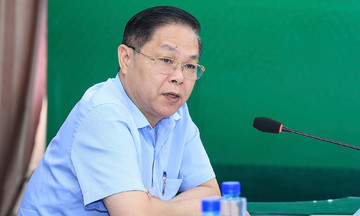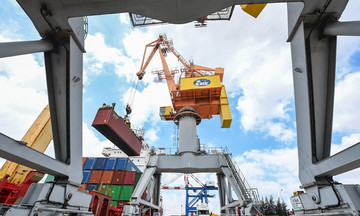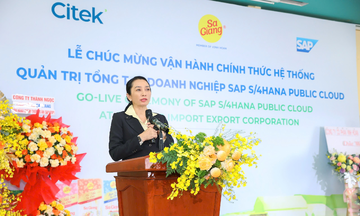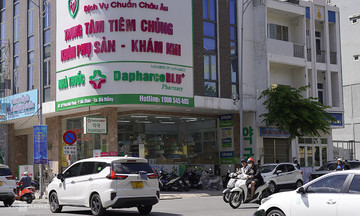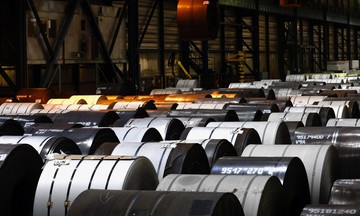On 22/8, former US President Donald Trump announced the government's acquisition of a 9.9% stake in Intel for $8.9 billion, equivalent to $20.4 per share. This price is $4 lower than the stock's closing price on the same day.
This investment marks the White House's latest significant intervention in US private enterprise, aligning with Trump's push for domestic manufacturing and job creation.
It follows his earlier criticism of Intel CEO Lip-Bu Tan for alleged "conflicts of interest," demanding his resignation, a stance he later reversed. "This is a tremendous deal for America and for Intel. Advanced semiconductor and chip manufacturing, Intel's domain, is foundational to our nation's future," he declared.
The White House's $8.9 billion investment, coupled with $2.2 billion in prior federal funding, brings Intel's total government support to $11.1 billion. This deal makes the US government Intel's largest shareholder, though the closing date remains undisclosed. Tan pledged to "ensure the world's most advanced technologies are made in America."
Some analysts believe Intel will particularly benefit in its factory construction endeavors. The company is investing over $100 billion to expand US production, with large-scale chip production slated to begin later this year at its Arizona plant. "Access to capital and a new shareholder invested in your success are both crucial," commented Peter Tuz, President of Chase Investment Counsel. Earlier this week, SoftBank also announced a $2 billion investment in Intel.
 |
Outside Intel's California headquarters. Photo: Intel |
Outside Intel's California headquarters. Photo: Intel
However, skepticism persists. According to Andy Li, Senior Analyst at CreditSights, government ownership could signal that Intel is "too big to fail." "But conversely, there are concerns about governance impact and the company's ability to act in shareholders' best interests," he stated.
More importantly, Intel faces inherent competitive challenges beyond capital. Once an icon of US chip manufacturing, Intel has faltered due to years of mismanagement, losing its leading position to TSMC and falling behind Nvidia in the AI chip race.
Intel's market capitalization now stands at just over $108 billion, less than half of Advanced Micro Devices (AMD) at over $272 billion, while Nvidia has become a giant with a market cap of $4,340 billion. In Quarter II, Intel reported flat revenue at $12.9 billion and a net loss of $2.9 billion.
Intel has poured billions into building chip plants in Ohio, a region the company once dubbed the "Silicon Heart," intending to produce cutting-edge chips, including those for artificial intelligence (AI). However, in July, Tan announced a halt to discretionary spending and a slowdown in the Ohio complex construction, contingent on market conditions. The Ohio plant is now projected to open in 2030.
According to Reuters, Intel needs customers to order its advanced 14A chip process, a difficult feat in the short term. CEO Lip Bu Tan warned last month that the company might exit the foundry business without major contracts. "Future investment in Intel 14A will depend on firm customer commitments," he said.
Analyst Kinngai Chan from Summit Insights emphasized that Intel must secure sufficient customer orders for its 18A and 14A processes to make its foundry business economically viable. "We don't believe any government investment will change the foundry's fate without enough customers," he stated.
Currently at an impasse, Intel must demonstrate its advanced chip production capabilities to attract clients. Reuters reports that Intel's current 18A process, less advanced than 14A, is experiencing yield issues, affecting the number of usable chips.
Large foundries like TSMC often tolerate high failure rates in initial batches when working with major clients like Apple. But for Intel, with six consecutive quarters of net losses, maintaining profitability while doing so is a challenge.
"If yields are low, new customers won't choose Intel Foundry, so it doesn't really solve the company's technical problems," noted analyst Ryuta Makino from Gabelli Funds, an Intel shareholder.
Makino believes Intel can eventually achieve acceptable chip yields, but considers the deal with the White House less advantageous than receiving support under the original CHIPS Act during the Biden administration. "This isn't free money," he said.
Under the agreement, the White House will not hold a board seat at Intel and will vote with the board on shareholder matters, with some "limited exceptions." The government also receives a five-year option to buy an additional 5% stake in Intel at $20 per share, effective if Intel loses at least 51% ownership of its foundry business.
Intel's stock rose 5.5% on 22/8 on Trump's news but fell 1% in after-hours trading following the deal's details. Year-to-date, Intel stock is up 23% thanks to Tan's announced large-scale layoffs.
Phien An (Reuters)





